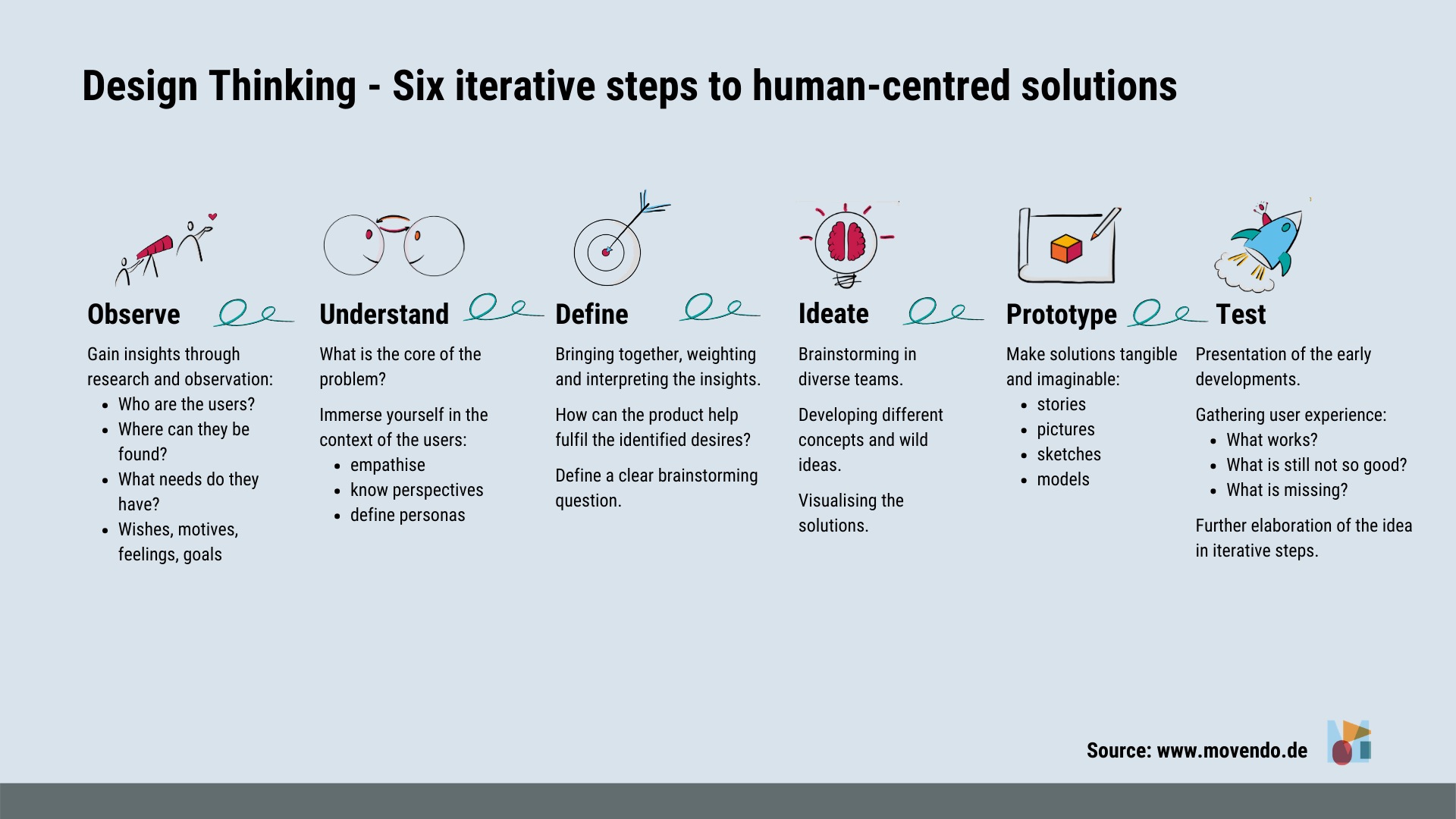#favouritemodel No. 5 - Design thinking uses iterative, rapid feedback to produce human centric solutions

Human-centered innovation begins with an understanding of customers’ or users’ unmet or unarticulated needs. Customer intimacy - a deep knowledge of customers and their problems - helps to uncover those needs. Design Thinking follows a systematic step-by-step process (see below) from which sophisticated IT applications but also pragmatic solutions for collaboration can emerge. It encompasses cognitive and creative activities including problem-finding, decision-making, sketching, prototyping and evaluating. During the process, the designer's attention oscillates between understanding the problematic context and ideas for solution. New solution ideas can lead to a deeper understanding of the problematic context, which in turn triggers more solution ideas.

Five core principles are essential to design thinking:
Human-centricity: Empathy for the person or people you are designing for (as well as user feedback) is fundamental to successful solution design.
Experimentation and prototyping: Prototyping is not simply a way to validate ideas; it is an integral part of the innovation process. We experiment, build prototypes in order to think, learn and potentially fail.
Action before thought: The name „design thinking“ is misleading; it is more about doing that thinking. Design thinking has a bias toward doing and making over thinking and meeting.
Show don’t tell: Creating experiences, using illustrative visuals, and telling good stories are the backbone of the design thinking process. The experience communicates ideas and visions more impactful and meaningful than any text would.
Power of iteration: Only through iteration we can learn and further fine-tune our solution design. That’s’ why the process encourages as many cycles as possible – i.e., interview twice, sketch twice, and test with your partner twice. Iterating is a key success factor to useful and customer-centric outcomes.
The design thinking process can be applied in a multiple of context and use cases. May it be to design a new product or service, to develop new busines models, define new ways of collaboration or the necessary skills of a performing team. The fundamental starting point for a successful design process is the problem statement which summarizes sharply which challenge the design process wants to tackle.
How can my #favoritemodel help you?
If you are currently working on a problem which you seem unable solve, ask yourself:
- what exactly is my problem statement? Is it stated as a problem and as a sentence? Or is it stated as a question? Does it precisely describe the challenge at hand? If not, take some time to fine tune or specify. The more accurate the statement, the easier the next steps will be.
- Who could help me to sharpen the statement? Whose view is paramount to define the problem statement? Involving others usually broadens the range of perspective and hence sharpens the statement.
- Who will benefit from the solution to this problem? Who is my customer or the target group I design a solution for? Having a clear view of and focus on my customer increases the success rate of my solution design.
If you are currently working on a solution for a specific problem, ask yourself:
- am I involving enough different perspectives? Am I collecting enough feedback? Do I dare to offer 50-80% solutions to collect feedback early on? Am I allowing for enough iterations to shape the solution? Why not? What does hold me back? Incorporating feedback early on is scary as you make yourself vulnerable to the judgement of others. It pays back long term as you enrich your solution iteratively.










